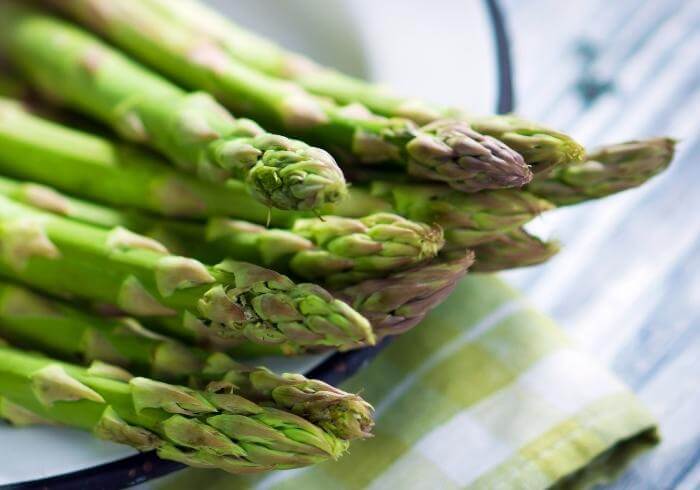When it comes to asparagus, freshness is key. This delicate vegetable should be crisp and vibrant, with a flavor that is slightly sweet and nutty. But despite your best efforts, asparagus can go bad before you have a chance to eat or cook it. What does bad asparagus look like?
Your asparagus has gone bad when it has turned slimy, the stalks are wilted, and the tips are mushy. Other signs may include color changes, an off smell, and the presence of mold, which means it is no longer safe to eat.

If you’re ever in doubt, throw out your bad asparagus to reduce your chance of food poisoning!
Here are several signs that your asparagus has gone bad and ways to tell if it’s time to toss it out.
Signs That Your Asparagus Has Gone Bad
Mushy Or Slimy Asparagus
If you notice your asparagus is slimy or the tips have become mushy, the decomposition process has already begun and is a major sign that it has gone bad.
Can you eat slimy asparagus? The asparagus may still be safe to eat if cooked, but the texture and flavor will be significantly diminished. It’s also probable that bacteria has rampantly grown out of control and could pose a risk of food poisoning.
I know asparagus is expensive, but don’t take any chances with this one.
You can do some things to prolong the shelf life of your asparagus and prevent it from getting slimy in the first place.
First, make sure to store it in the refrigerator. The cold temperature will slow down decomposition.
Try to keep the asparagus dry by wrapping it in a paper towel or storing it in a container with a lid. Do not store it in a plastic bag from the grocery store because moisture will build up inside the bag, promoting bacterial and mold growth.
Finally, don’t wash the asparagus until you’re ready to use it. Excess moisture is one of the main culprits of decay, so keeping the asparagus dry will help it stay fresh for longer.
Moldy Asparagus
If you see mold growing on your asparagus, it’s time to say goodbye. Mold spores can quickly spread to other foods in your fridge, so it’s best to get rid of moldy food right away.
Asparagus mold may look like white or gray fuzz at first, but it can quickly turn black and fuzzy. It’s often accompanied by slimy stocks and mushy tips where moisture is present.
If you see any mold on your asparagus, discard all of it immediately.
Your Asparagus Smells Off
Fresh asparagus doesn’t really have an odor other than a slight “green” smell for those with sensitive sniffers. When asparagus goes bad, it may not emit much of a smell at all.
If your asparagus smells fishy or you notice an unpleasant odor coming from your asparagus, this is probably due to bacteria and a major sign to throw it away!
As with any food, if something doesn’t smell right, it probably isn’t safe to eat.
Limp Stalks
If your asparagus stalks are limp and droopy, that’s a sure sign that they’re past their prime. When asparagus is fresh, the stalks should be firm and hold themselves upright when held in your hand.
If they’re starting to bend over, that means they’re not getting the hydration they need and are on their way out. This is a tricky one because moisture will also aid in its decomposition, as mentioned above.
My best advice is to use up your asparagus within a couple of days after purchasing, don’t leave it hanging around in the fridge too long.
Asparagus Stalks Are Yellowing
Similar to other green vegetables and broccoli that goes bad, when asparagus stalks start to yellow, that’s another sign that they’ve seen better days.
The process of yellowing is accelerated by warmth and sunlight, so if you notice that your asparagus has started to turn yellow in the fridge, it’s best to throw it out. By this time, they will probably be limp and very fibrous.
However, if you’re growing asparagus in your garden and notice that the stalks are yellowing, it’s a good idea to harvest and use them as soon as possible. Once they start to yellow, they won’t get any sweeter or more tender.
Asparagus Tips Changed Color
As asparagus starts to age, the tips will begin to dry out and turn black or brown from their purple hue. This is because the tips are the oldest part of the stalk and have been exposed to oxygen for the longest time.
While the change in color of your asparagus tips won’t necessarily make your asparagus taste bad, they’re definitely not aesthetically pleasing and just another sign that it’s on its way out.
If you’re not interested in eating asparagus that is past its prime, the best course of action is to simply discard it.











